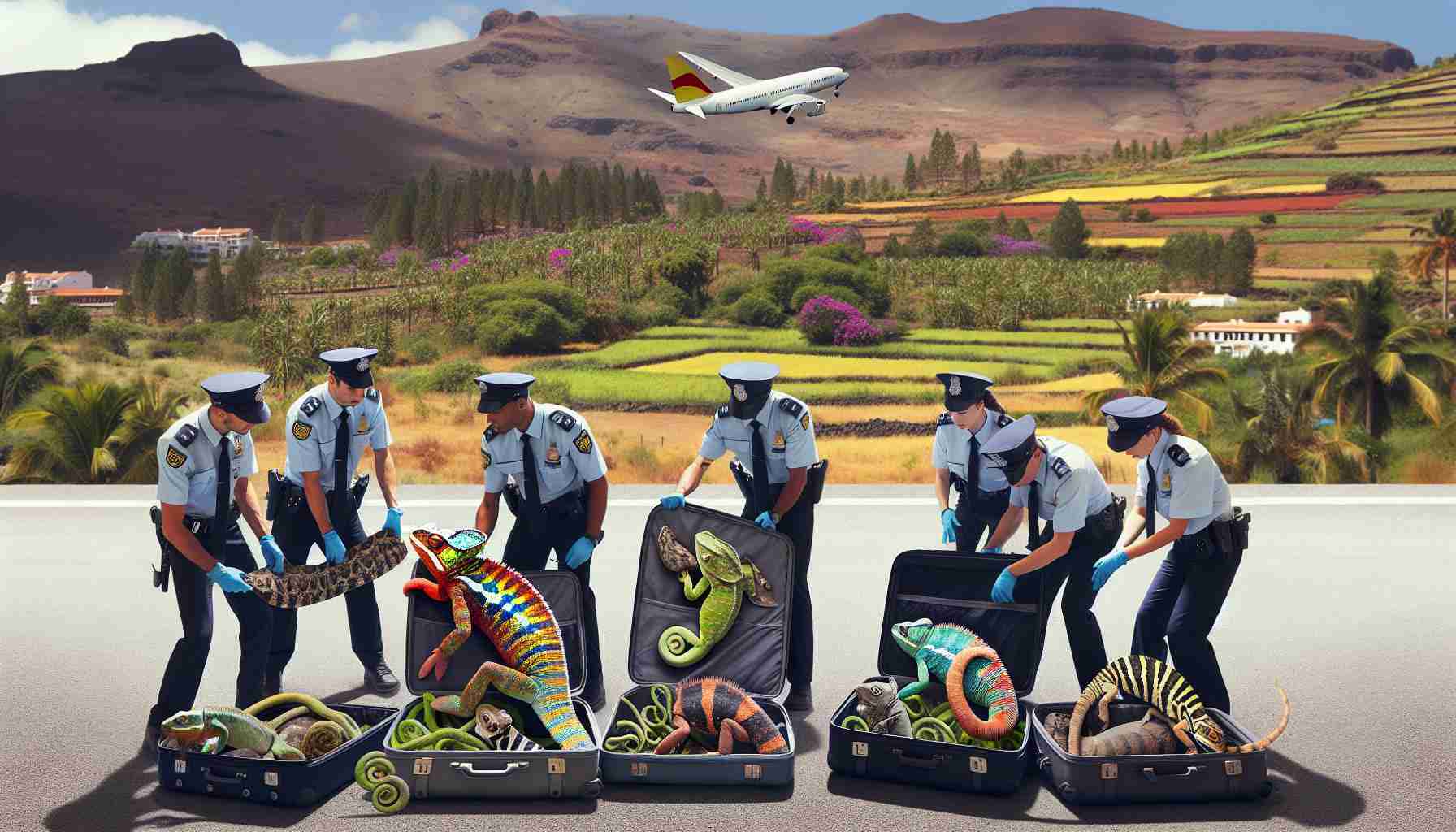
Illegal Transport of Exotic Reptiles Unveiled in Tenerife
A man was apprehended by the Civil Guard in Tenerife for attempting to smuggle three live specimens of a rare reptile species known as the Giant Canary Lizard.
The suspect, a 52-year-old resident of Santa Cruz de Tenerife, was caught with the contraband during a routine inspection at the Santa Cruz de Tenerife Port. His suspicious behavior drew the attention of the authorities, leading to a closer examination of his vehicle.
Upon inspection, law enforcement officers discovered a juvenile lizard concealed within the vehicle. Further investigation revealed two adult specimens hidden inside the emergency triangle compartment.
The Giant Canary Lizard, a protected species under the National Catalog of Endangered Species, is safeguarded by the Law 42/2007 on Natural Heritage and Biodiversity. The offender faces severe penalties under Article 334 of the Penal Code, including imprisonment for up to two years or fines ranging from eight to twenty-four months, in addition to a special disqualification.
It was disclosed that the perpetrator has a history of wildlife-related offenses, emphasizing the significance of combating illegal trafficking and possession of endangered species.
Illegal Smuggling of Exotic Reptiles Continues to Plague Tenerife
In the recent case of the apprehended individual attempting to transport rare Giant Canary Lizards, more concerning details have come to light shedding further insight into the illicit trade of exotic reptiles in Tenerife. This particular incident, while bringing attention to the issue, represents only a fraction of a larger problem lurking beneath the surface of wildlife trafficking.
Key Questions and Answers:
1. What other exotic reptile species are commonly targeted for illegal transport?
Exotic reptiles such as the Blue Chameleon and the Tenerife Gecko are also highly sought after in the black market due to their rarity and unique characteristics.
2. What are the primary challenges faced by authorities in curbing illegal wildlife trafficking?
One of the key challenges is the ability of smugglers to operate discreetly, often using sophisticated methods to conceal contraband. Lack of strict monitoring and loopholes in transportation regulations also enable such activities to persist.
3. Are there controversies surrounding the penalties imposed on offenders in wildlife smuggling cases?
Some argue that the current penalties under Article 334 of the Penal Code may not serve as a sufficient deterrent to prevent repeat offenses. There is ongoing debate about the need for more stringent laws and enforcement measures targeting wildlife traffickers.
Advantages and Disadvantages:
One advantage of cracking down on illegal transport of exotic reptiles is the protection of vulnerable species and preservation of biodiversity. By apprehending smugglers, authorities can send a strong message against wildlife crimes and discourage potential offenders from engaging in such activities.
However, a notable disadvantage lies in the intricate nature of the wildlife trafficking network, making it challenging for law enforcement to track down and intercept every case effectively. The high demand for exotic reptiles in the illegal market also fuels the continuous cycle of smuggling despite the risks involved.
For more information on wildlife conservation efforts and initiatives to combat illegal wildlife trafficking, visit the World Wildlife Fund website.
This alarming revelation underscores the urgent need for enhanced vigilance and collaborative efforts to protect endangered species from the ruthless clutches of smugglers, ensuring a sustainable future for Tenerife’s rich biodiversity.